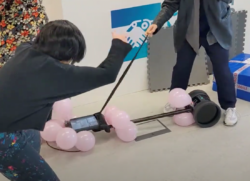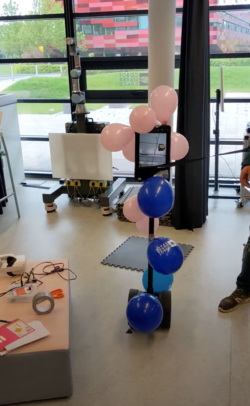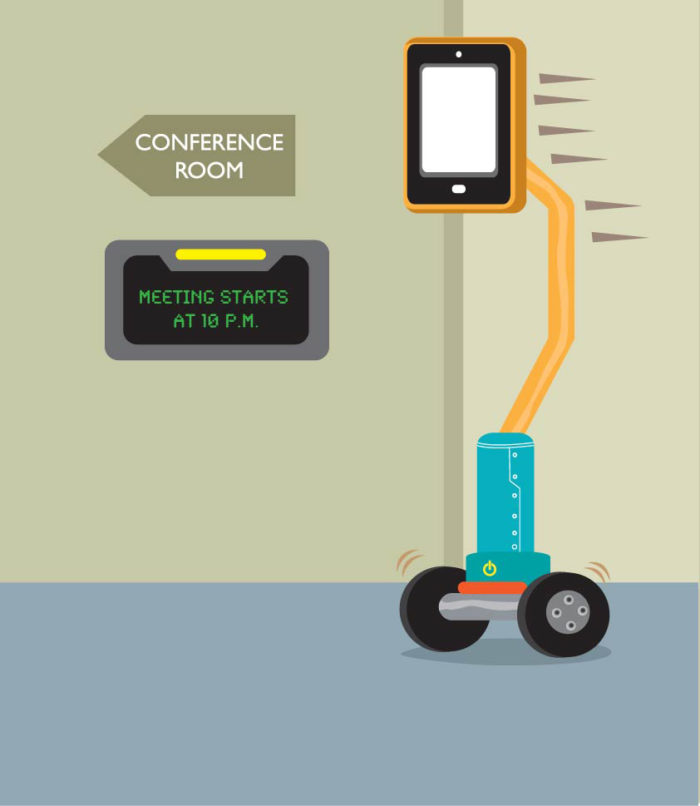24
10
.22
Open All Senses
Collaborative robots (cobots) are becoming commonplace in our everyday lives – for instance robot tour users in museums. As such, the challenges around acceptance, safety and trustworthiness need to be studied. Our project explores how safe and comfortable people feel when interacting with cobots and will support transforming cobot and cobot space design and utility. We are studying the deployment of telepresence robots in social settings by using rooms set up to replicate a nursing home and museum environment within the Cobot Maker Space (CMS). We will investigate different robot embodiments (such as telepresence robots, humanoid robots, etc.) and develop physical interfaces (e.g equipping robots with robotic arms) for such technologies.


Telepresence robots are internet enabled mobile platforms which allow a person to connect to, and interact with, a remote environment. Telepresence gives operators the appearance and feel of being present via a remote robotic system, usually equipped with a screen and video calling capabilities. There are a wide range of options available on the market designed for a variety of uses, including industrial environments (inspections and troubleshooting), remote attendance for events (such as conferences) and medicine (enabling patients to visit remote places and allowing visitors in restricted hospital areas) . There is limited work on how physical interactions can be enabled through telepresence. Our research will identify the requirements of instrumented spaces and telepresence robots working within them, develop manipulation capabilities on telepresence platforms and investigate the generation of visuo-haptic feedback to provide a better understanding of the physical space to the remote user.
We are currently running workshops with stakeholders to support the creation of the two mock-up environments (nursing home and museum) within the CMS. We are prototyping and equipping CMS telepresence cobots with physical capabilities, in a way to allow more complete and meaningful remote interactions. Once we test and study these technologies in controlled laboratory/simulated settings, we incrementally build and expand this research into real-world environments.
At the heart of this work is developing technology in a responsible way. At every step, we are examining the legal and ethical landscape governing the deployment of interactive robots developed in the spaces of study. Working in partnership with the hoRRIzon project and utilising a law in context approach, and doctrinal and socio-legal methodologies, we will produce a report setting out guidelines for the safe, legal and ethical use of cobots in everyday life. We are making use of the Moral-IT cards and Legal-IT cards with stakeholders, are considering how cobots can be deployed and safeguards that need to be in place to ensure that deployment of these technologies does not harm the physical, economic and privacy interests of users of the technology, the space and employees of the space, and that accountability and redress is available in the event of harm.
Tags:
cobot maker space,
cobots,
design,
ethics,
hoRRIzon,
Legal IT cards,
Moral IT cards,
responsible research,
robots,
safety,
technologies,
telepresence,
trust,
trustworthiness
















